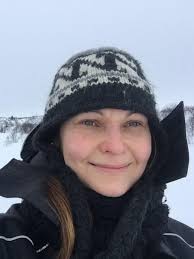Annually laminated or varved sediments have great potential for high-resolution studies of past climate and environmental changes with seasonal scale due to their intrinsic time control. Varves are formed as a result of annual sedimentation cycle. Seasons control the composition an availability of sedimentary material leading in to formation of laminae that represent seasonal conditions while catchment geology sets the boundary conditions. Varves are formed and preserved in wide scale of environments and climates. Thus, they provide important archive for investigating climatic and environmental changes over wide range of climatic and geographical locations. Delicate coring and subsampling methods are prerequisites for retrieving undisturbed sediment sequences, where the fine laminated structures are well preserved, in order to produce temporally accurate and precise varve records. Modern techniques include microfacies analysis from thin sections combined with detailed image analysis reinforced by high-resolution element profiling performed using micro-XRF scanning across individual laminae. These methods enable investigation of seasonal variations of the annual sedimentation cycle through time.
In boreal climate, seasonal changes are imprinted in sediments in form of winter-controlled spring flood lamina and growing season controlled biogenic lamina. The spring flood lamina is formed as a consequence of enhanced catchment erosion caused by spring floods triggered by episodic melting of snow. The varve records in many boreal locations suggest that winter climate is related to North Atlantic Oscillation. However, our investigations have shown that temporal and spatial changes occur in proxy sensitivity or even forcing factors. This highlights the need for detailed understanding of the sedimentation cycle, catchment dynamics and the controlling processes case specifically, in order to reconstruct climate variability from varve records. Supplemented by monitoring campaigns using sediment traps, as well as climate and hydrological observations, deep understanding of seasonal controls on sediment supply, varve formation and preservation can be achieved.
Catchment control on varve formation and varve occurrence: lessons learned from Finnish varve records
by
Saija Saarni
From University of Turku, Finland
Host: Manon Bajard

Published Aug. 26, 2019 1:25 PM
- Last modified Oct. 21, 2019 8:27 AM